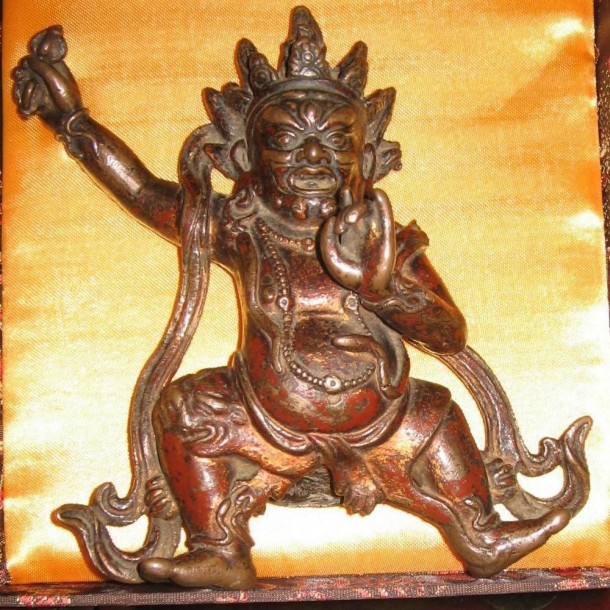Tsatsa
When mentioned Tibetan religion, dense nationality color, and its mysterious atmosphere will appear in your mind, giving you the feeling of mystery and dignity. Tsatsa is a typical Tibetan Buddhist art form. In this sense, we can say that Tsatsa is one of the symbols of Tibetan’s long history of religion. Explore Tibet Team, a professional Tibet travel agency. Today introduces Tsatsa to you.

Tsatsa was introduced into Tibet from India after the 10th century. Tsatsa originates in Sanskrit, and it is votive tablets in Tibetan Buddhism, usually clay impressions made with a mold. Usually, there is a hollowed, reversed image of a deity, a stupa, or other sacred symbols in the Tsatsa.
By ingredients added in Tsatsa, Tsatsas can divide into various categories, such as plain clay Tsatsa, ash Tsatsa, medicine Tsatsa, and humoral Tsatsa. Just as its name, plain clay Tsatsa means no unique ingredient in it. Ash Tsatsa means there are some ashes of late lamas are added to it. Medicine Tsatsa means there are some Tibetan herbs added to it. Humoral Tsatsa contains liquid produced in the mummifying procedure of late high lamas. In a word, the name of the Tsatsa depends on the materials added to it. After stats are molded, they are dried or fired to be complicated.
For Tibetans, Tsatsa is a holy object, and it can be found inside stupas, prayer wheel niches, sacred caves, monastery altars, or any sacred sites. Some people even put the small Tsatsa inside a portable amulet shrine and took them as amulets.
Today, a number of stupas of the time can still be found in Tibet, and the Tsatsa clay figurines are in various shapes. Comes and experiences this magical world of culture with. Explore Tibet Team.
Recent Posts
Can Tourists Visit Tibet?
Exploring the Beauty of Tibetan Handicraft
The Ultimate Guide to Tibet Tours, Travel, and Trekking Adventures
All Categories
- About Tibet
- book a Tibet tour
- Buddhism Practice
- Budget Tour
- China-Tibet Train
- Customized Tibet tour
- Historical Sites
- Hot Springs in Tibet
- News
- Photography in Tibet
- Tibet attraction
- Tibet Group Visa
- Tibet Motorcycle Tour
- Tibet Small Group Tours
- Tibet Tours and Tibetan Tour Guide
- Tibet Train
- Tibet Travel FAQs
- Tibet Travel Information
- Tibet Travel News
- Tibet Travel Permit Update
- Tibet Travel Prices Rises
- Tibet Trek
- Tibet Trekking Tour
- Tibet weather and climate
- Tibet Wildlife animals
- Tibet Winter Tour
- Tibetan Buddhism
- Tibetan Cultural Features
- Tibetan Culture and Poeple
- Tibetan Festivals
- What to see in Tibet


